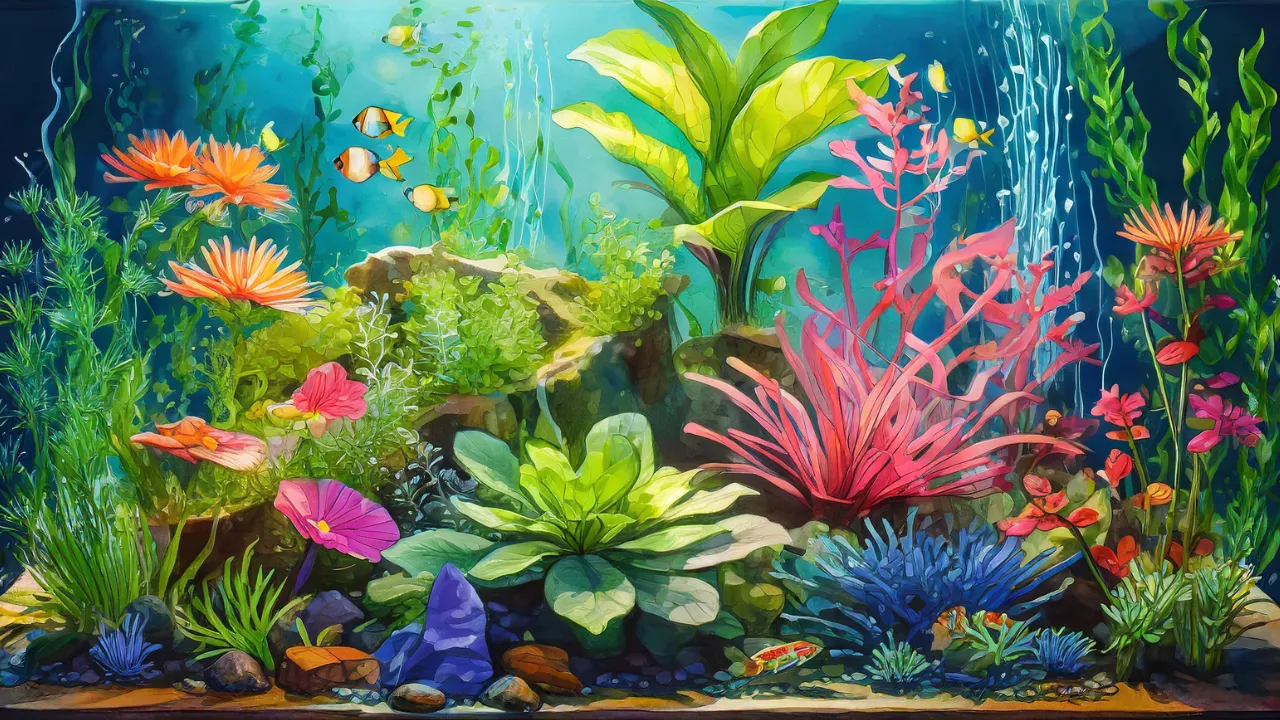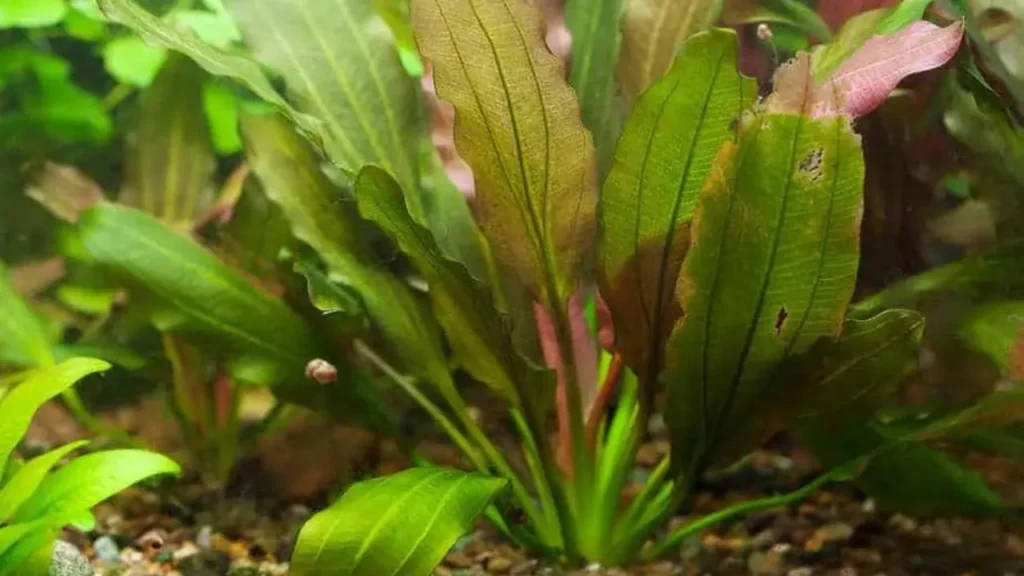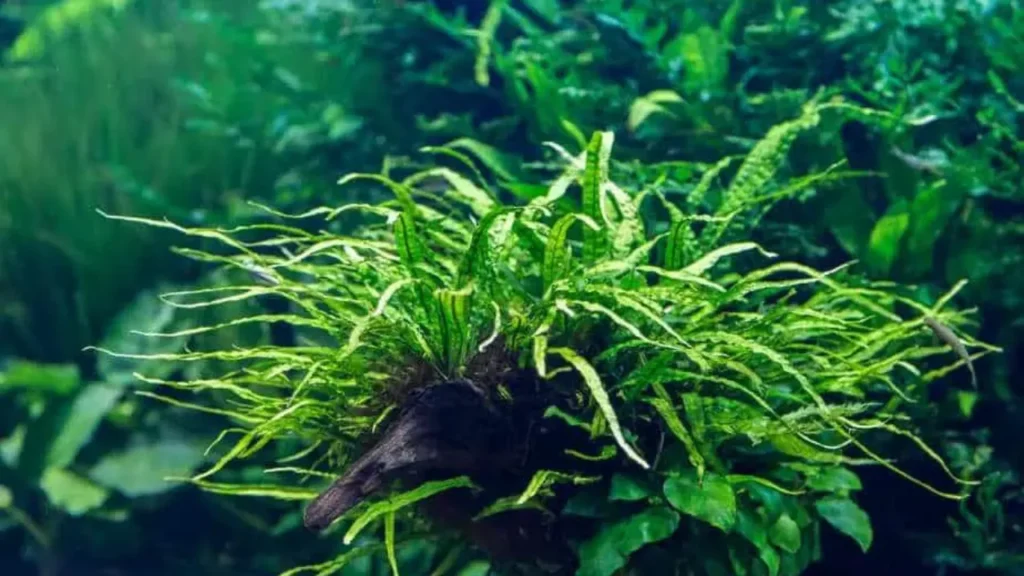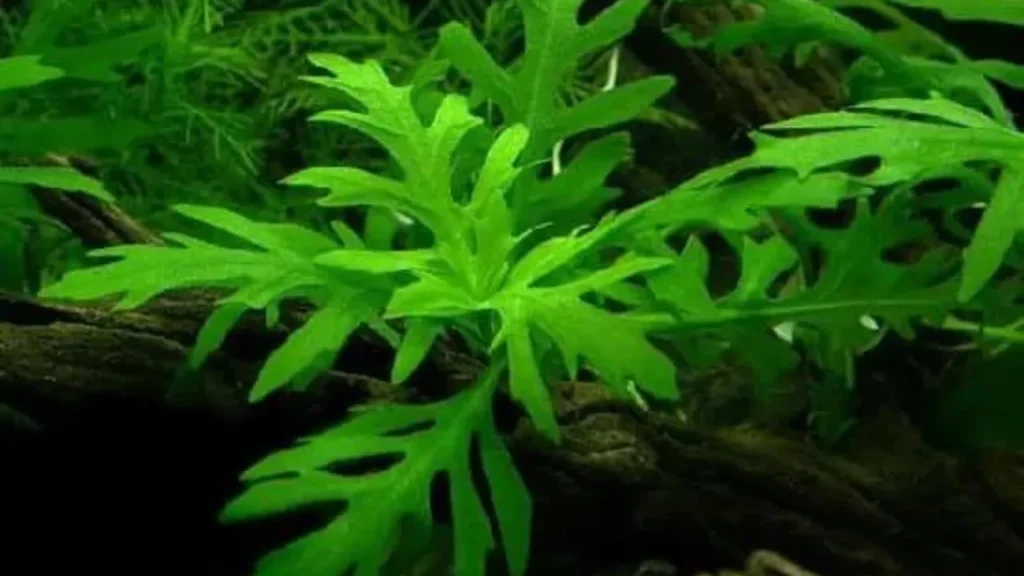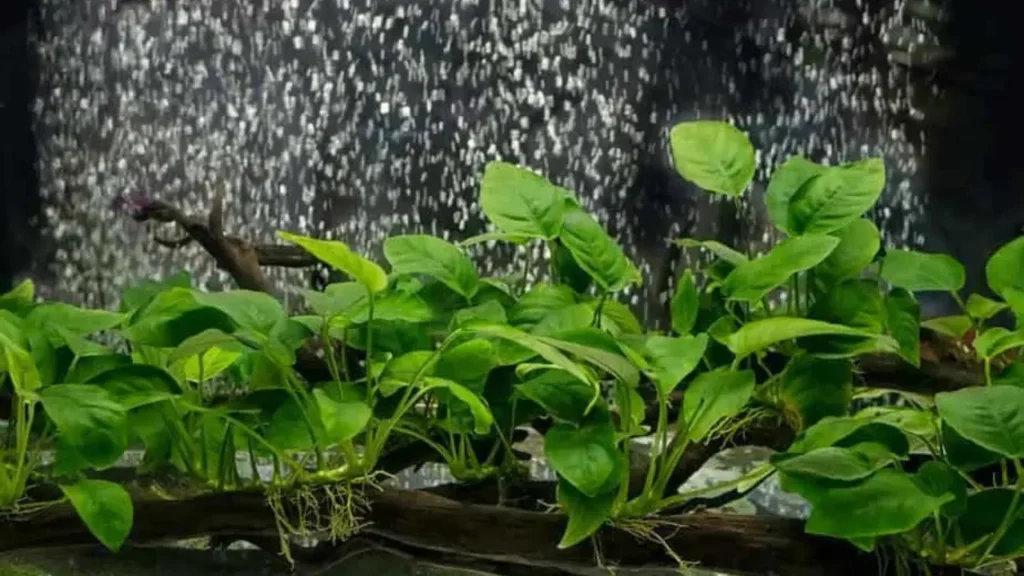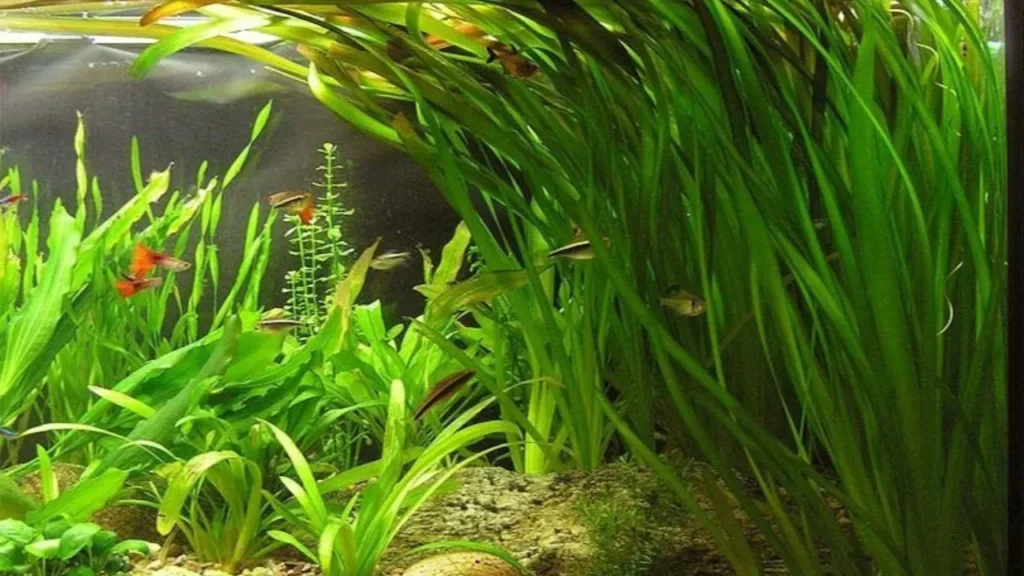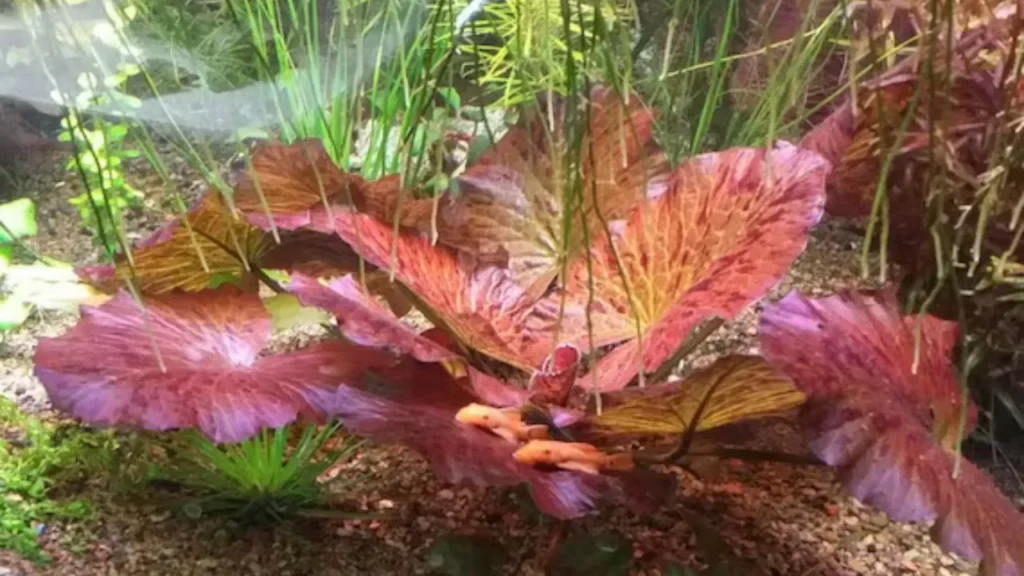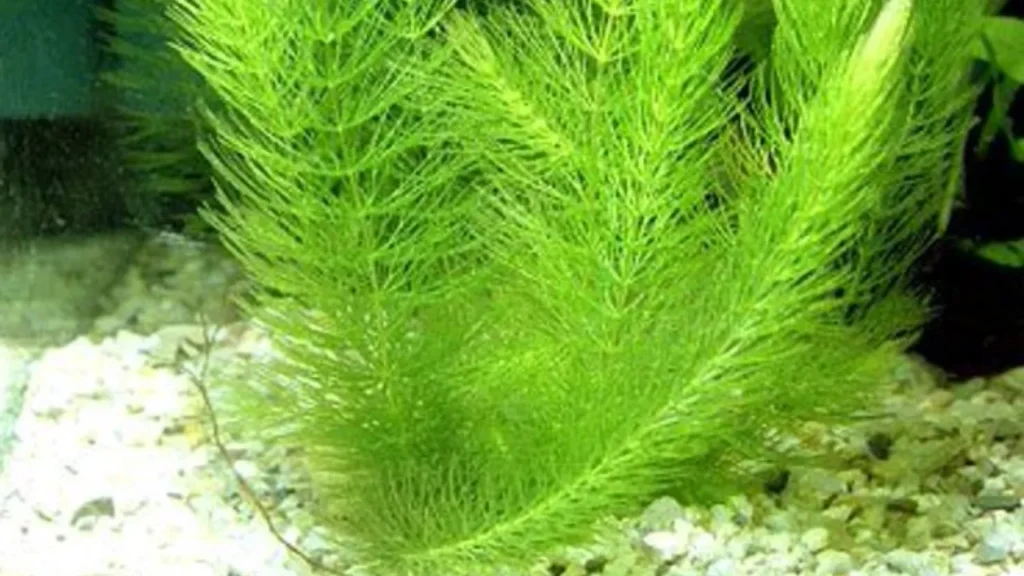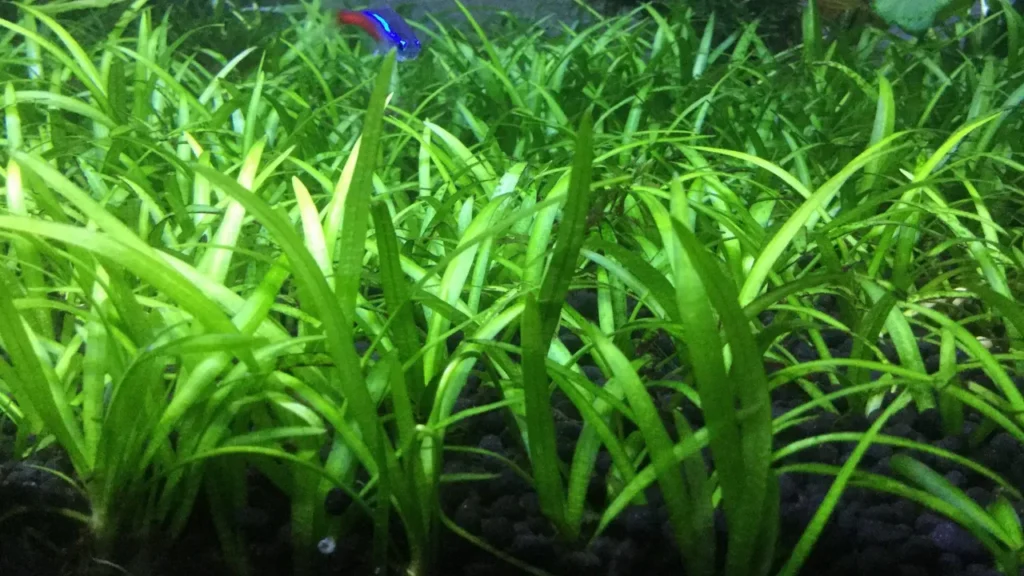Introduction
Angelfish (Pterophyllum spp.) are stunning and elegant freshwater fish that are popular among aquarists. They add a touch of grace and beauty to any aquarium, especially when paired with the right angelfish tank decor. In this article, we will explore the best ways to choose aquarium plants for angelfish aquarium setup, focusing on the use of angelfish tank decor. By selecting the right plants and creating a well-balanced environment, you can provide your angelfish with a natural and aesthetically pleasing home.
Understanding Angelfish Habitat
To create an ideal environment for your angelfish, it’s important to understand their natural habitat. Angelfish originate from the Amazon basin in South America, where they inhabit slow-moving sections of rivers, tributaries, and swamps. In these areas, they seek refuge among dense vegetation, including tall plants with large leaves.
How To Choose Best Aquarium Plants for Angelfish?
When selecting aquarium plants for angelfish housing, there are some important factors to consider. First, these elegant cichlids can grow quite tall as adults, potentially reaching 10 inches in height. Their bodies are also laterally compressed, making them fairly wide side-to-side.
To accommodate the size of mature angelfish, it’s crucial to choose tall-growing aquarium plant varieties that reach all the way to the water surface. This allows ample swimming room for these big fish while also providing shaded hiding spots near the top of the tank that angelfish gravitate towards. Plants like hornwort, anarchis, and Amazon sword are great choices to create the necessary vertical space angelfish require.
Another reason plant selection matters is for encouraging angelfish to breed. Live aquarium plants play a key role in spawning by offering broad, sturdy leaves for the pair to deposit eggs on. Species such as Amazon sword and cryptoccoryne with large leaves are perfect for egg laying. You’ll also want to incorporate dense thickets of stems plants like cabomba that give the breeding pair privacy and cover to help them feel secure.
When setting up a planted angelfish tank, keep these needs in mind. Select tall plants to accommodate their large size, while also providing large-leaved species and dense vegetation to promote natural spawning behaviors. With the right aquarium plants, you’ll give your angelfish the ideal environment to thrive and reproduce.
Best Aquarium Plants for Angelfish Tank Decor.
When selecting aquarium plants for angelfish tank decor, it’s crucial to choose species that mimic their natural habitat.
Here are some of the best options for angelfish tank decor:
1. Amazon Swords (Echinodorus spp.)
Amazon swords are a must-have aquarium plants for angelfish tanks. These plants have large, broad leaves that provide ample space for angelfish to lay their eggs. They can grow up to 16 inches tall, making them an excellent choice for background plants. Amazon swords thrive in moderate lighting conditions and require root tabs for optimal growth.
2. Java Fern (Microsorum pteropus)
Java fern is a versatile plant that is suitable for angelfish tanks. Its thin but sturdy leaves provide cover and hiding spots for the fish. Java fern can be attached to driftwood or rocks and does well in low to moderate lighting. Avoid burying the roots, as it can cause rotting. Instead, tie or glue the plant to a suitable surface.
3. Water Wisteria (Hygrophila difformis)
Water wisteria is an excellent choice for angelfish tanks due to its versatility and rapid growth. It can be planted in the substrate or left floating in the water. Water wisteria has delicate, feathery leaves that create a lush and natural look. It also helps to maintain water quality by absorbing nitrates.
4. Anubias (Anubias spp.)
Anubias plants have thick, sturdy leaves that provide a great surface for angelfish to lay their eggs on. They are low-maintenance and can thrive in low light conditions. Anubias can be attached to driftwood or rocks using fishing line or plant-safe glue.
5. Jungle Vallisneria (Vallisneria americana)
Jungle vallisneria is a tall, grass-like plant that creates a dense and natural environment for angelfish. It can grow up to 6.5 feet in height, making it suitable for larger tanks. Jungle vallisneria propagates by sending out runners, creating new plants. Trimming the tops of the plants can help control their height.
6. Red Tiger Lotus
This beautiful aquatic plant has many common names including dwarf tiger lotus, red tiger lotus, and dwarf tiger lily. But regardless of the specific name, this plant has some great benefits for angelfish tanks.
One key feature is that it sends tall stem shoots upwards, allowing it to reach and fill in at the water surface. The plant produces vibrant broad leaves in shades of red, green, and pink that stand out. It can also grow scenic lily pads and flowers across the water’s surface.
The red tiger lotus thrives in the warm tropical temperatures that angelfish require, making it an excellent choice. Its height provides cover while allowing open swimming space. And the large leaves offer perfect spawning sites for angelfish pairs. With its bright colors and ability to reach all tank levels, red tiger lotus is a great plant for angelfish aquariums.
7. Hornwort
One excellent aquarium plant to consider for an angelfish tank is hornwort. Despite its delicate, feathery appearance, hornwort is actually a very easy, low-maintenance species that even beginner aquarists can grow successfully.
Hornwort has thin, forked green leaves that provide dense foliage and plenty of hideaways for angelfish. This hardy plant thrives under moderate to bright lighting, making it adaptable for most home aquariums. It grows quickly, helping to soak up excess nutrients in the water.
To keep hornwort actively flourishing, add ample liquid fertilizer to the water on a regular basis. The plant is an unrooted floater, so it can be anchored in the substrate or left free floating at different levels. Hornwort’s fast growth also makes it great for soaking up nitrates between water changes.
8. Dwarf Sagittaria
While many of the best aquarium plants for angelfish tanks are tall, background varieties, shorter plants can be incorporated in the foreground as well. One excellent option is dwarf sagittaria.
In high lighting conditions, dwarf sagittaria stays compact, typically under 6 inches tall, making an ideal foreground plant. It has thin, bright green leaves that add texture and appeal. Without sufficient light, it may shoot upward seeking more illumination. But even then, it makes for an attractive midground plant.
For best growth, provide very bright lighting over dwarf sagittaria along with nutrient supplementation through rich substrate or root tabs. The plant helps absorb waste and is great for shrimp and other invertebrates too.
Some other short plants to consider for the angelfish aquascape include crypt parva, cryptocoryne wendtii, blyxa japonica, and echinodorus latifolius. Go with dwarf sagittaria or any of these small varieties to add diversity and interest to the lower levels of your angelfish tank.
Picking the Best Aquarium Substrate for Angelfish
When setting up a planted aquarium for angelfish, the choice of substrate is an important consideration. Most aquatic plants need to root in the tank bottom material. Angelfish also have some specific needs when it comes to substrate.
As cichlids, angelfish will sometimes sift through and move substrate around with their mouths while foraging. Sharp-edged gravel can potentially damage their long, elegant finnage during this behavior. Larger gravel pebbles are also too heavy for angelfish to easily displace.
For these reasons, a fine gravel with smooth edges or aquarium sand are better options for angelfish tanks. Both provide a soft footing that is gentle on angelfish fins and scales. The smaller grains are also easy for angelfish to pick up and move around naturally.
At the same time, fine gravel and sand allow robust root growth for most aquarium plants. The tiny grains have more surface area for beneficial bacteria to adhere to as well. Go with an angelfish-safe substrate in your planted tank to keep both fish and plants happy and healthy.
Planted Angelfish Tank Setup.
Creating the perfect planted angelfish tank requires more than just selecting the right plants. Here are some additional factors to consider at the time of angelfish aquarium setup:
Tank Size and Dimensions
Angelfish are tall-bodied fish that require adequate height and space to swim. A tank with a minimum length of 30 inches and standard height is suitable, but taller tanks are even better. This allows the fish to stretch their fins and move up and down in their environment.
Water Flow and Filtration
Angelfish prefer slow to moderate water flow and do not appreciate strong currents. Avoid using powerheads in the tank, as they can create excessive water movement. Instead, use a spray bar attachment or other methods to diffuse the flow. Proper filtration is essential to maintain water quality and keep the tank environment healthy for the fish and plants.
Hardscape and Decor
In addition to plants, incorporating hardscape elements such as driftwood and rocks can enhance the overall aesthetics of the angelfish tank. Tall branches of driftwood and large stones can add height and contrast to the vegetation. Angling the branches or arranging them in separate directions can create a sense of water flow and break sight lines.
Lighting
Choose appropriate lighting for your angelfish tank, considering the needs of the plants and the fish. Most aquarium plants require moderate lighting, so select a suitable light fixture or bulb that provides the necessary intensity. Be mindful of the light duration to simulate a natural day-night cycle.
Complete Guide to Angelfish Tank setup..
Maintaining a Planted Angelfish Tank.
To keep your planted angelfish tank healthy and thriving, regular maintenance is essential. Here are some key tasks to remember:
Water Changes
Regular water changes are crucial to maintain water quality and remove accumulated toxins. Aim for weekly water changes of 20-30% to keep the tank environment clean and stable.
Pruning and Trimming
As the plants in your angelfish tank grow, they may require pruning and trimming to maintain their shape and prevent overcrowding. Remove any dead or decaying plant material promptly to prevent water quality issues.
Fertilization
Provide essential nutrients to your aquarium plants through liquid or substrate fertilizers. Follow the instructions for the specific product you choose and monitor plant growth and health to adjust the fertilization regimen if necessary.
Algae Control
Algae can be a common issue in planted tanks. Monitor your tank for any signs of algae growth and take appropriate measures to control it. Regular maintenance, proper lighting duration, and maintaining a balanced nutrient level can help prevent excessive algae growth.
Conclusion
Creating a beautiful planted angelfish tank with the right aquarium plants is a rewarding endeavor. By selecting plants that mimic their natural habitat, providing adequate space and cover, and maintaining proper care and maintenance, you can create a stunning environment for your angelfish to thrive. Remember to consider the specific maintenance needs of the plants and fish at the time of angelfish aquarium setup, and enjoy the beauty and tranquility of your angelfish planted tank.

